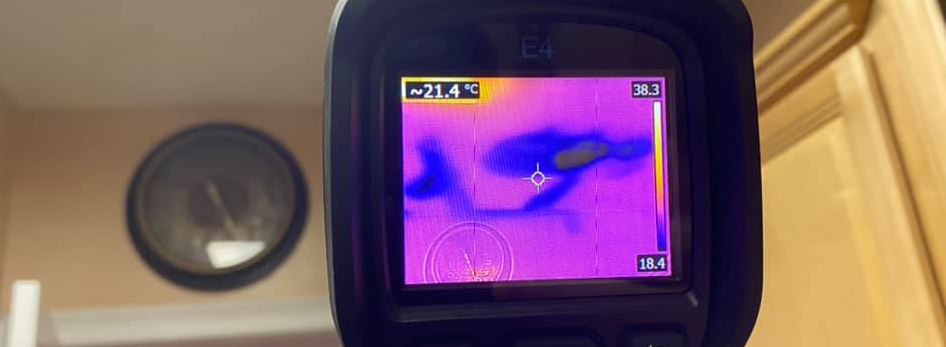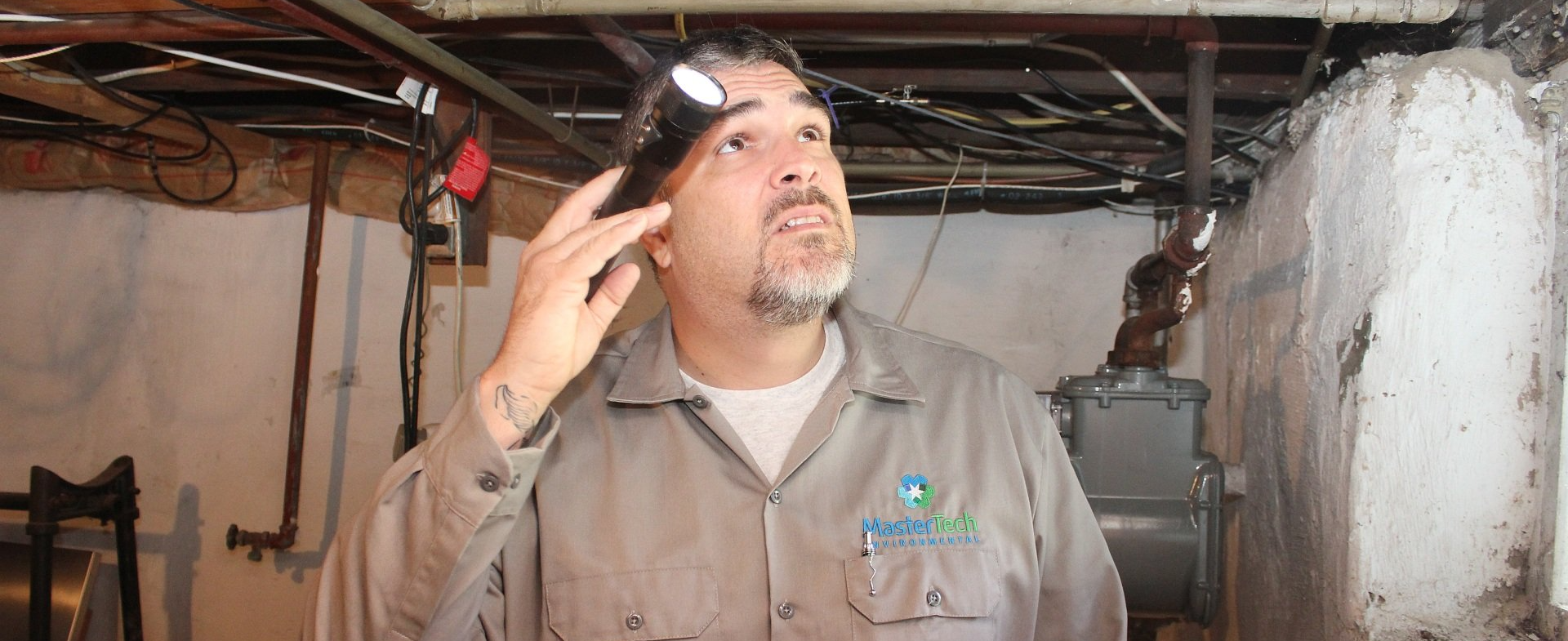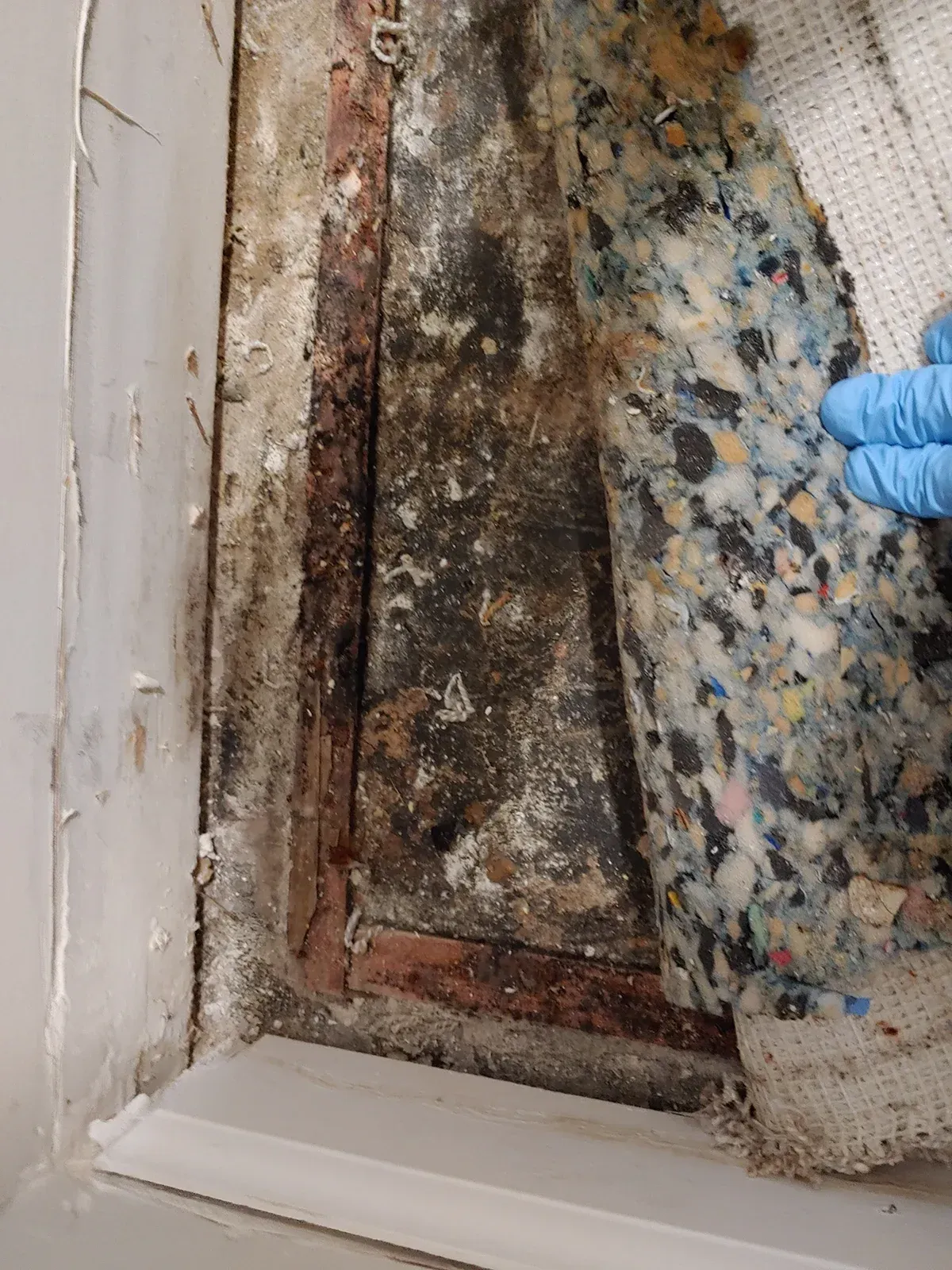Do I Have Mold In My South Carolina Home?
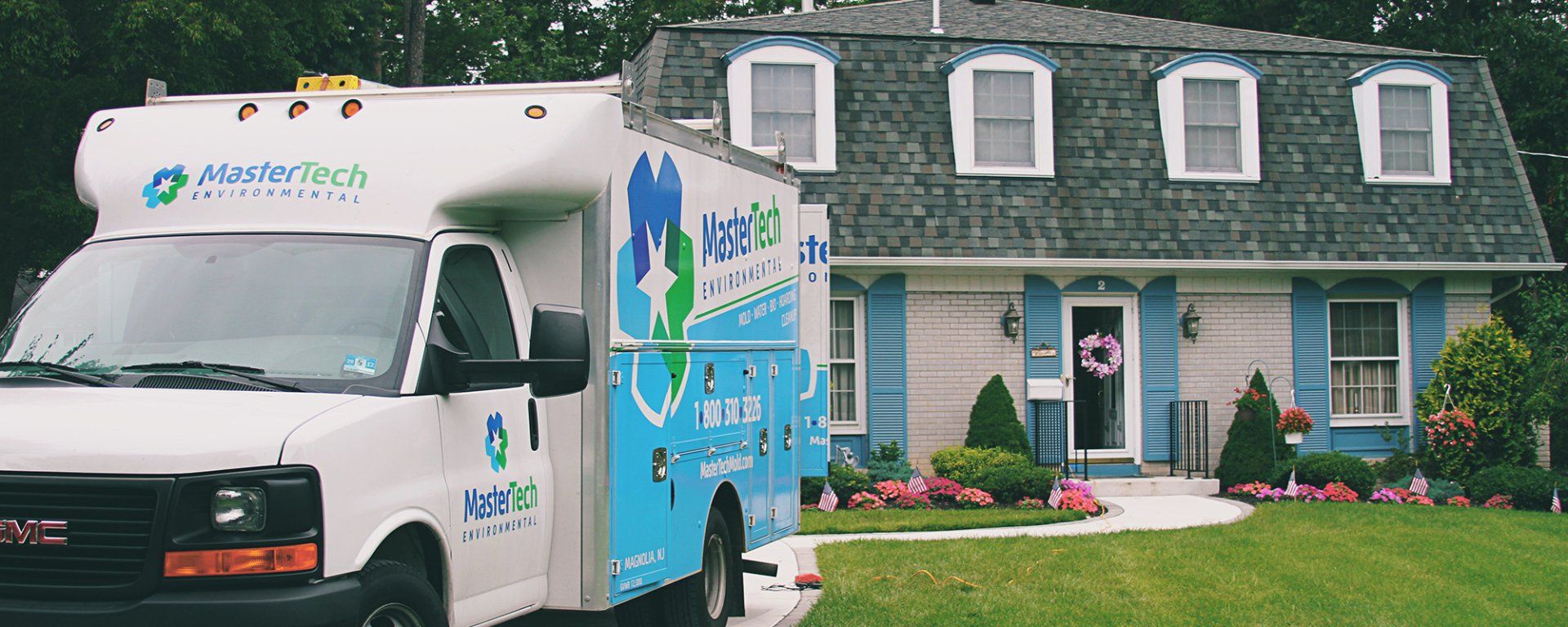
Keys Signs Of Indoor Mold Growth In South Carolina
All mold needs to thrive is an adequate moisture source, dead organic matter, and warm temperatures. The nature of mold allows it to grow on and spread to virtually any surface in your home. In some situations, an indoor mold problem is quite obvious and hard to miss. However, that is not always the case. We see a lot of scenarios where mold begins to develop in wall voids, under building materials or in non-living spaces (i.e.: basements, attic or crawl spaces), and the property owner has no idea of the problem. Tiny mold spores can settle into small, damp crevices without notice, and before you know it, you can have a full blown mold contamination. That is why it is important to learn how to identify signs that could be pointing to a mold or moisture problem.
When it comes to dealing with mold development in your South Carolina home or business, early detection can make all the difference. Given enough time, unaddressed mold and moisture will leave you with serious property damage and put you at risk for potential health implications. It only takes 24-48 hours for mold to develop once moisture is introduced to the environment. If you pay attention to the warning signs of mold growth and take immediate action upon the detection of mold, you can save yourself a great deal of stress and money down the road.
Visible Signs Of Mold South Carolina
- Mold growth can be black, white, grey, brown or green in color.
- It can be powdery in texture or appear in small splotches.
- Often times, mold will be accompanied by suspicious staining or discoloration.
- Basements, attics, and crawl spaces are commonly damp environments and tend to be vulnerable to mold development: basement mold in South Carolina, attic mold in South Carolina, crawl space mold in South Carolina.
- South Carolina homeowners should make it a habit of regularly assessing all areas of the home (including the basement, attic, and crawl space) for any visual indicators of mold growth.
- If you see suspicious growths or unexplained staining/discoloration in your South Carolina home, contact a professional mold inspector to have your home properly inspected.
“Musty” Odors In Your South Carolina Home
- If mold is developing in a hidden space (i.e: wall voids, under carpet, behind wallpaper, above ceiling tiles, etc.), there may not be any visual indicators of mold growth.
- Mold releases a pungent, earthy odor that can be rather off-putting. You should take action immediately upon detection of the odor.
- Odors can permeate through flooring and walls, so be sure to check for signs of water damage in all adjacent areas/rooms.
- During your investigation, DO NOT open up walls, peel up wallpaper, or rip of carpeting without proper containment. You may risk disrupting the mold spores and cause cross-contamination to clean, unaffected areas.
- If you smell musty odors from an area with a history of moisture problems, call a mold professional who will have the necessary tools and experience to help. Even if there are no visual signs of mold, there could be extensive hidden mold growth that should be handled by a trained professional.
Unexplained Allergies In South Carolina
- The presence of mold can be determined by any unexplained health symptoms.
- Depending on the individuals living in the home, mold exposure can manifest several symptoms:
- Allergy symptoms–sneezing, runny/stuffy nose, coughing, itchy eyes, etc.
- Asthmatic symptoms–coughing, wheezing, shortness of breath
- Irritant reactions– rashes, itchiness, swelling (similar to allergies)
- Symptoms can range from very mild to very severe. And you might notice that you will start to feel better if you are out of your home for a while.
- If you and your family feel sick in your home and cannot explain the cause, it could be the symptoms of mold exposure.
To be certain, contact a mold professional to conduct a comprehensive mold inspection with mold testing.
History Of Moisture Issues In South Carolina
- There needs to be an adequate moisture source in order for mold to colonize and spread. Signs of water damage can be the first indicator of mold development.
- Mold does not always require a major leak or flooding to develop. In fact, humidity or condensation can be plenty of moisture to encourage mold growth.
- Moisture problems should be addressed immediately to avoid severe mold development.
- Water should be extracted, and the area should be thoroughly and properly dried out.
- Humid rooms should be well ventilated to encourage constant air circulation.
- If you know of areas in your home that have suffered from water issues and you are detecting potential signs of mold activity, contact a mold removal professional in South Carolina to quickly and safely handle the mold.
Once you know that your home has a mold problem, don’t wait. Hire a reputable mold removal company that can safely and efficiently restore your proper and your family’s peace of mind. Be proactive in preventing mold growth in your home with moisture control tactics. In order to spot mold early in its development, take the time to routinely check your home for potential signs of mold growth.
For professional mold remediation services in South Carolina, call Mastertech of Myrtle Beach today at 843-236-3399!
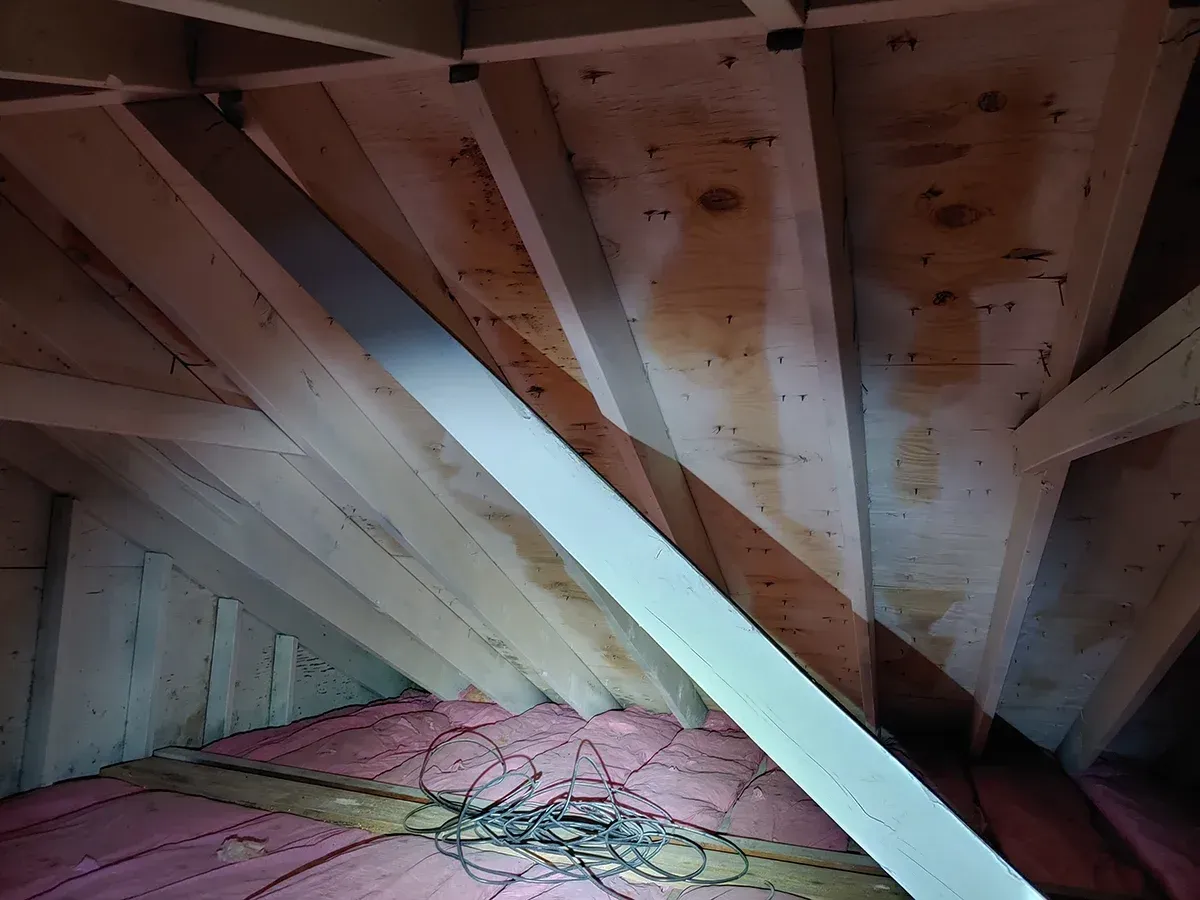
You smell something musty when the AC kicks on — is it coming from your attic? It’s unsettling when a wave of mustiness greets you every time your air-conditioning starts. The odor wafts from vents, yet looking around your living room reveals no visible problem. Eventually, you climb into the attic and find black and white patches on the roof decking and rafters. You may feel embarrassed for missing it, angry about the potential cost, and worried about what your family has been breathing. That mix of emotions is normal. Hidden attic mold often goes unnoticed because attics are rarely visited and because spores can travel quietly through ductwork. When mold establishes itself overhead, it isn’t just an eyesore; it becomes an air-quality issue for your entire home. Molds release spores whenever they are disturbed. An HVAC system that passes through or near a moldy attic can carry those spores into bedrooms and living spaces, exacerbating allergies and asthma. Any mold growth indoors indicates a moisture problem and needs to be addressed promptly. Attic mold remediation isn’t about cosmetic cleaning—it’s about eliminating a contamination source, fixing the underlying moisture and ventilation issues, and protecting your air ducts from becoming a delivery system for spores. How Attic Mold Enters Your Living Space Mold contamination in the attic rarely stays contained. The attic may be hidden above your head, but the pathways that connect it to your living space are surprisingly efficient. Airflow, ductwork, and even subtle pressure changes in your home can act as invisible highways, carrying spores downward where your family lives and breathes. Understanding these entry points shows why attic mold is more than an isolated issue; it’s a whole-house problem. Here are the most common ways attic mold infiltrates the rest of your home. · Supply and return ducts run through or near a moldy attic. Warm air traveling through cool, humid attic spaces can condense on ducts, creating wet spots where mold colonizes. Once mold grows on or near the ductwork, spores are easily pulled into the system and distributed to the rest of the house. · Negative pressure draws attic air downward. When bathroom fans or dryers operate, they can depressurize living areas, pulling attic air (and mold spores) into the house through small openings around light fixtures and access hatches. · Running a contaminated HVAC system spreads spores. If heating or cooling equipment is contaminated with mold, operating it can push spores throughout the building. Moisture and Ventilation Issues Are the Real Culprits It’s easy to blame mold itself for the problem, but mold is more of a symptom than a cause. The real enemy is moisture, and in the confined environment of an attic, even small amounts of dampness can create a breeding ground. Mold takes advantage of humidity, condensation, and leaks, thriving wherever water lingers longer than it should. Without addressing these underlying triggers, any cleanup is only temporary. The most common culprits behind attic mold include the following: · High humidity or inadequate ventilation. Warm, humid air trapped in an attic condenses on cooler surfaces. Blocked soffit vents, improperly vented bathroom fans, or missing ridge vents allow moisture to accumulate and keep attic lumber damp. · Roof or flashing leaks. Small leaks around chimneys, vents, or roofing materials provide direct moisture and can drip onto insulation and rafters unnoticed. · Poorly insulated ceilings or ducts. Temperature differences between conditioned living spaces and an unconditioned attic cause condensation on ductwork or the underside of roof sheathing, encouraging mold growth. · Long run times for undersized HVAC systems. Oversized fans running continuously re-evaporate water sitting on cooling coils and push moisture back into the attic and ducts. What Professional Attic Mold Remediation Does Differently DIY attempts often focus on surface-level fixes, such as bleach sprays or paint, but these solutions only mask the problem temporarily. Professional attic mold remediation is different because it treats the issue as a whole-house health hazard, not a cosmetic blemish. The process is carefully designed to protect your family during cleanup, remove contaminated materials thoroughly, and prevent mold from coming back. A trained remediation team follows a multi-step approach that includes: · Containment and protection of living areas. Professionals install physical barriers and negative-pressure units so that air flows into, not out of, the work area. This prevents spores from traveling to clean parts of the home. Simply painting over or covering mold is not an acceptable solution. · Removal and cleaning of contaminated materials. Technicians remove severely damaged insulation or duct sections, clean salvageable wood using HEPA-vacuuming and antimicrobial treatments, and may sand or dry-ice blast rough lumber to remove deep growth. · Addressing the root moisture problem. There is no lasting benefit to removal if humidity and leaks are not fixed. Professional remediators locate and repair roof leaks, correct ventilation deficiencies, insulate or encapsulate ductwork, and may recommend installing a dedicated dehumidifier. Attic Mold Remediation in Myrtle Beach: Protect Your Air Before It’s Too Late Mold in the attic is more than a hidden blemish; it’s a whole-house problem that contaminates your air every time the HVAC kicks on. We’ve seen how spores spread through ducts, how moisture and poor ventilation create the perfect breeding ground, and why surface-level fixes never last. Together, these factors turn a neglected attic into a serious health and structural hazard. The takeaway is simple: attic mold remediation isn’t optional or cosmetic — it’s essential. Professional containment, thorough removal, and moisture control protect your family’s health, preserve your home’s integrity, and prevent the cycle from repeating. So when that musty odor lingers, don’t dismiss it. It’s your home’s way of warning you. Act now, and secure cleaner air and a safer house with professional attic mold remediation.

